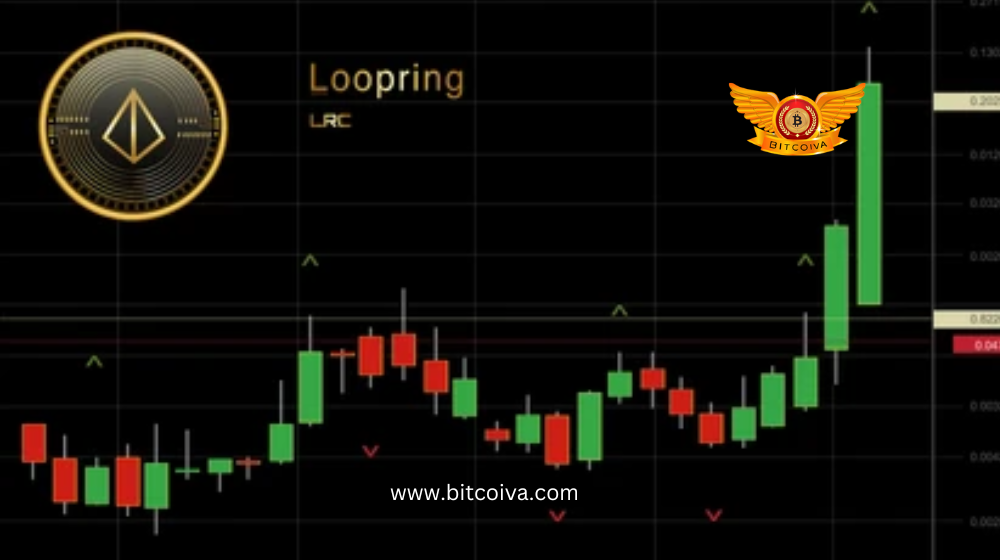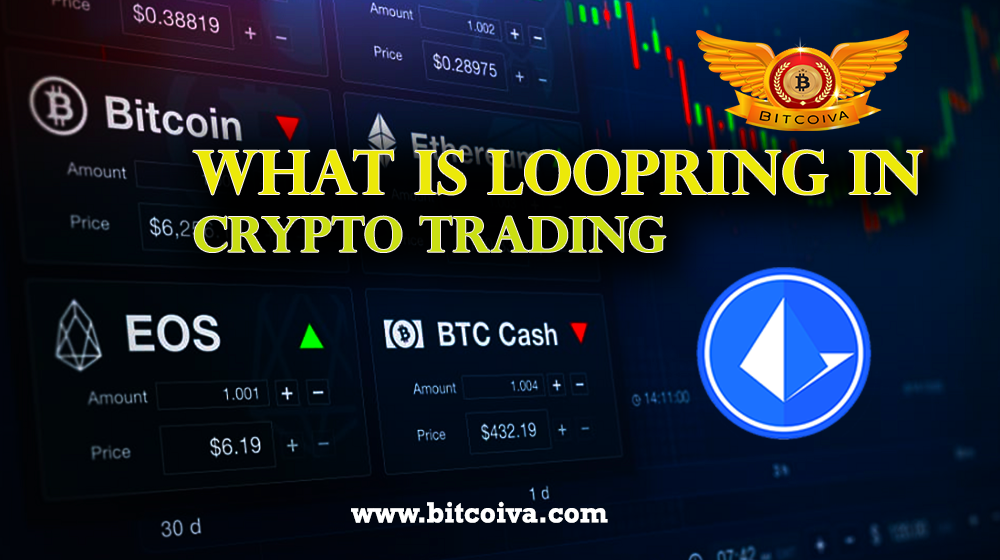If you think Ethereum will be the platform for financial transactions in the future, you may have had your faith in the platform shaken by transaction costs of up to $200 and the blockchain’s 14 transaction per second cap.
What Exactly is Crypto Trading?
A program called Loopring made to run on top of Ethereum’s blockchain (a layer 1, or base, blockchain). By processing portions of Ethereum transactions on its own network, Loopring aims to make the experience of using Ethereum faster. Imagine doing it to relieve traffic on the main route by building a side road. According to the creators of Loopring, this enables the protocol to attain throughput maxima of 2,025 transactions per second, or 1,000 times more than Ethereum. Transactions on Loopring cost less than a cent, in contrast to Ethereum’s exorbitant costs.
Other blockchains, like Avalanche and Solana, that also assert to be quicker and less expensive than Ethereum may have come to your attention. These referred to as layer 1 blockchains, unlike Loopring. This simply implies that, like Ethereum, they are autonomous blockchains with separate validators.
Loopring
The Loopring token drives a decentralised exchange of the same name that allows you to trade Crypto Exchange Platform like Ethereum tokens like USDC, AAVE, and ETH at a fraction of the price of those offered by Uniswap and other centralised services built on the Ethereum network. Key characteristics of Loopring
Loopring uses a technology called zkRollups to achieve its high throughput and low cost. Let’s dissect that. Zero-knowledge, or Zk, is an abbreviation for “zero-knowledge proofs.” This is a technique for handling transactions secretly. It enables one party to demonstrate to another that something is accurate without divulging any unnecessary details on the transaction itself.
Without having to peek out the window, a zero-knowledge proof may inform you that it is raining today or convince a border patrol agent that you allowed to enter the nation without providing your name and address. For bitcoin protocols that don’t wish to divulge excessive information to outsiders or rely on a centralised authority in the event of a problem, zero-knowledge proofs are crucial.
Loopring
When using a base layer blockchain like Ethereum, rollups are a form of scaling system that gathers batches of transactions before “rolling” them into a single transaction. Because numerous transactions can completed simultaneously and the cost of a single transaction can divided, rollups are a means to reduce costs and boost speeds.
Both of these technologies come together in ZkRollups. According to Looping, it’s “the most secure scaling method the industry is aware of, allowing users access to their assets in any situation.” It is appropriate for applications like decentralised exchanges or lenders that demand trustlessness. The token of Loopring. The loopring utility token, which is a native to the Loopring network, fuels it (also known by its ticker, LRC).
Loopring
LRC established in 2017 and serves as the main engine for Loopring’s decentralised exchange, which went live in February 2020. Every time you process a trade on the DEX, you must pay in LRC. Exactly 80% of the funds go to liquidity providers, with the remaining funds being divided between insurers and Loopring’s autonomous decentralised organisation (DAO).

What’s the Process of Loopring?
ZkRollups
By establishing a “fast lane” where transactions combined and carried out off-chain to avoid Ethereum’s network congestion, Loopring (LRC) outperforms conventional decentralised exchanges in terms of performance. ZkRollups, a Layer-2 scaling solution, used in this process to group numerous transactions off-chain before submitting them to the Ethereum blockchain as a single transaction.
By using this technique, trades on Loopring become significantly faster and more affordable while also reducing the amount of transactions Loopring submits to the Ethereum network for settlement. This strategy is highly effective and puts far less pressure on the Crypto Platform India Ethereum network.
The “zk” in zkRollup stands for “zero knowledge,” and it denotes the kind of proof that Loopring required to offer to confirm the accuracy of the off-chain transactions. It’s helpful to think about “zero knowledge” proof as being similar to giving someone the result of a computation without sharing the equations that employed to arrive at it.
Rings of Order
On some Crypto Trading Apps In India exchanges, a buy order for one token within a trading pair must matched by a sell order for the same token within the same trading pair. However, Loopring combines and matches various orders in an order ring, a circular trading mechanism. Up to 16 orders can contained in each order ring, which forms a loop in which each order can swap the desired tokens without the need for an opposing order for its pair. The likelihood of price discovery and improvement both greatly increased by this method.
What Sets Loopring Apart?
The advantages of centralized and decentralized bitcoin exchanges combined by Loopring. Its creative application of zkRollups enables it to outperform every other decentralized exchange established on the Ethereum blockchain in terms of throughput and costs, while its non-custodial technology enhances the security of centralised Crypto Indian Exchange.
Algorithmic traders are now able to apply high-frequency trading tactics on DEXs for the first time because to Loopring’s high level performance capabilities. A cryptographic method also used by Loopring to prevent frontrunning (when someone gets their own trades executed before pending transactions in order to profit from the price change that will result from said transactions).
Since the protocol is open-source, audited, and independent of any outside validators, nobody, including businesses and governments, may interfere with a user’s access to their bitcoins. Users also routinely receive digital receipts for all transactions and withdrawals, guaranteeing that money can always retrieved, even if there are problems with the decentralised exchange.
What Adds Value to Loopring?
The utility token of the Loopring network is the Crypto Currency Trading Platform Loopring (LRC). As well as providing them a vote in how the protocol administered, it rewards good behaviour from liquidity providers, insurers, and DAO (decentralised autonomous organisation) governors.
To run a decentralised exchange on Loopring that makes use of the protocol’s on-chain data availability, an operator must lock up a minimum of 250,000 LRC. Without this feature, a DEX requires a stake of 1 million LRC.
LRC is deflationary because tokens from some fees and from operators who had their stake reduced due to unsatisfactory behaviour burn up. This implies that the total supply of LRCs declines over time, which may have an effect on the price and market value of Loopring.
How Many Circulating Loopring (LRC) Coins Are There?
There are 1,245,991,469 Loopring (LRC) in circulation right now, with a maximum supply of 1,374,513,896 LRC. Since the Loopring protocol’s inception, more over 20 million LRC have burned, and any LRC that has locked up for running exchanges is currently off the market.
The Loopring DAO, which decides how to use those money, receives 10% of all fees. Grants, temporary loss protection, further liquidity incentives, and purchasing back LRC to burn are all possibilities. The amount of LRC in circulation reduced by any LRC that the DAO votes to burn as well as any that seized from exchange operators who do not behave in good faith.
Visit Us On: www.bitcoiva.com

